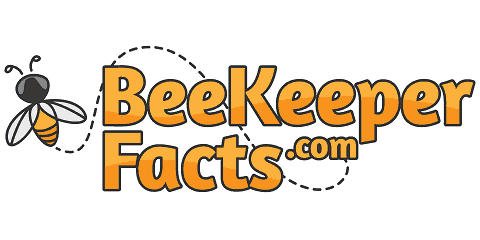How Long Does It Take Bees To Fill A Honey Super?
Do you want lots of honey? I certainly do and I want my bees to produce it as quickly as possible. But, as a new beekeeper I definitely had unrealistic expectations on how much honey my bees could produce and how quickly. So what is a realistic time frame for how long it takes bees to fill a honey super?
A strong colony during a strong honey flow can draw new foundation and fill a honey super in 1 week, and sometimes in 3 to 4 days. An average bee colony will take between 2 to 4 weeks, while a weaker colony will take 1 to 2 months.
I will discuss several factors that affect how quickly your bees will produce honey and fill your supers. Plus, I offer some great tips on how to properly store your honey and how often you can harvest honey in a year.
How Quickly Can Bees Fill A Honey Super
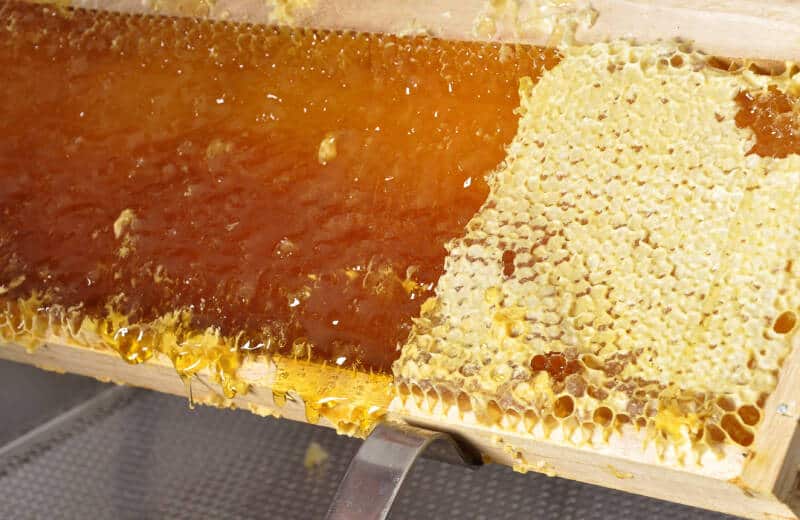
There is nothing more satisfying than having your bees produce a ton of honey during a strong flow. Don’t get me wrong it’s a ton of work but it I still love it. Unfortunately things don’t always go as planned and some hives just don’t produce very well or not at all.
Here are the most common factors that affect how quickly your bees will fill your honey supers:
1. Strength of colony – The strength of your colony is one of the most important factors that will affect how quickly your bees will produce honey. A strong colony can fill up honey supers really fast during honey flows. While weaker colonies just don’t have enough bees to gather the available nectar.
2. Honey/Nectar Flow – The strength of the honey/nectar flow is the most important factor that affects the filling of honey supers. This seems kinda of obvious since no nectar flow means no honey. The strength of the hive doesn’t matter if there is no nectar to collect.
3. Types of Frames – If you are using brand new frames, even with wax foundation, it will take longer to fill with honey since your bees have to draw comb as well. Of course, this will depend on the strength of your colony. But if your using honey frames that already have drawn comb, then your bees will fill these much faster. This is why already drawn frames are so valuable. So make sure you always store and look after them.
4. Equipment Size – The size and type of woodenware equipment you’re using will affect how quickly bees can fill the supers. It will take your bees longer to fill a 10 frame deep honey super compared to a 10 frame medium or shallow, not to mention 8 frame equipment.
5. Weather conditions – This also seems like a pretty obvious one. If its raining outside your bees are not going to be collecting nectar. But sometimes this is overlooked by new beekeepers especially with intermittent weather conditions.
If you have the ideal conditions such as a strong colony, strong honey flow, drawn out frames, and a long stretch of warm sunny days then your bees are going to fill those supers really fast. Strong colonies can fill a 10 deep super in less than a week and sometimes in as little as 2-3 days.
But as many experienced beekeepers will tell you this requires patience and planning to build strong highly productive colonies.
And if you have newer colonies I wrote an article all about how long it takes for a new beehive to produce honey I encourage you to read. This is something I wish I knew when I started beekeeping, I had pretty unrealistic expectations.
How To Store Honey Supers Before Extraction
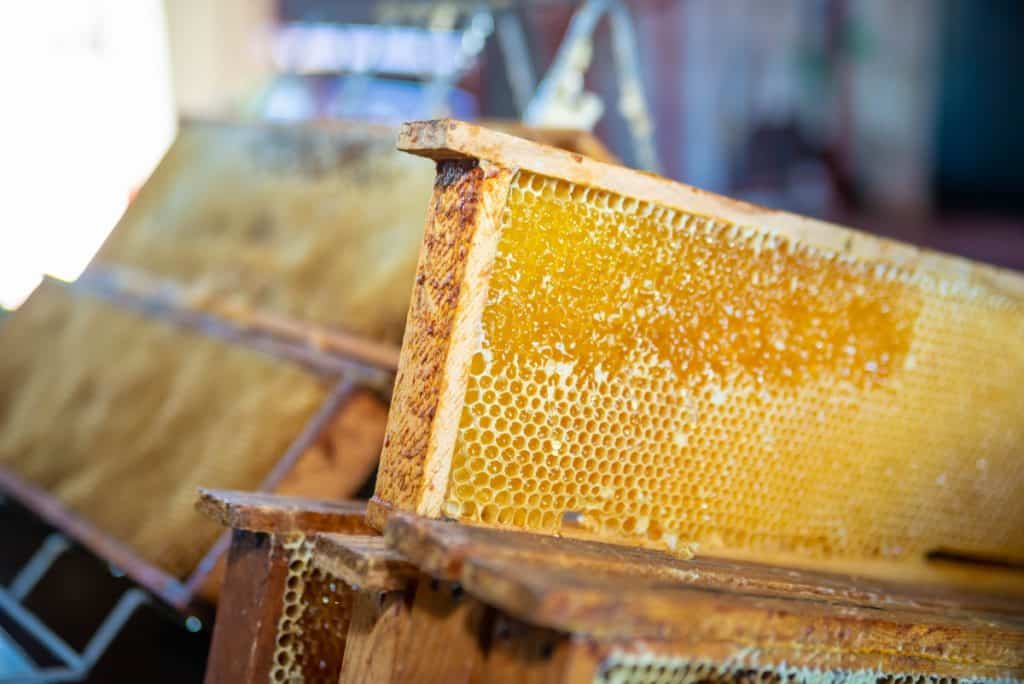
As a new beekeeper this is a very common question since you don’t want your honey frames getting infested with pests, disease, or robbed by other bee colonies.
The best practice is to simply leave your honey supers on top of the hives until you’re going to extract them. Large honey producers will have a honey room to pull the supers too for immediate extraction. Then simply put the extracted honey supers back on the hives during a strong honey flow.
But if you cannot extract the honey right away and are unable to leave them on the hives then placing the frames in a freezer is your best option. This is not only a great way to temporarily store your honey but will kill any potential pests such as wax moths. Freezing for 48 hours will kill any potential eggs.
When you’re ready to extract the frozen honey frames simply let them thaw out for several hours and you will be able to extract the honey. The freezing process will not cause creaming or crystallizing of your honey. But don’t refrigerate your honey frames because this will cause crystallization.
For a more in depth explanation of storing capped honey frames, I encourage you to read this article I wrote all about how long you can keep capped honey stored before extraction.
But how do you go about storing your honey frames and supers once your done with them for the season?
How To Store Honey Supers After Extraction
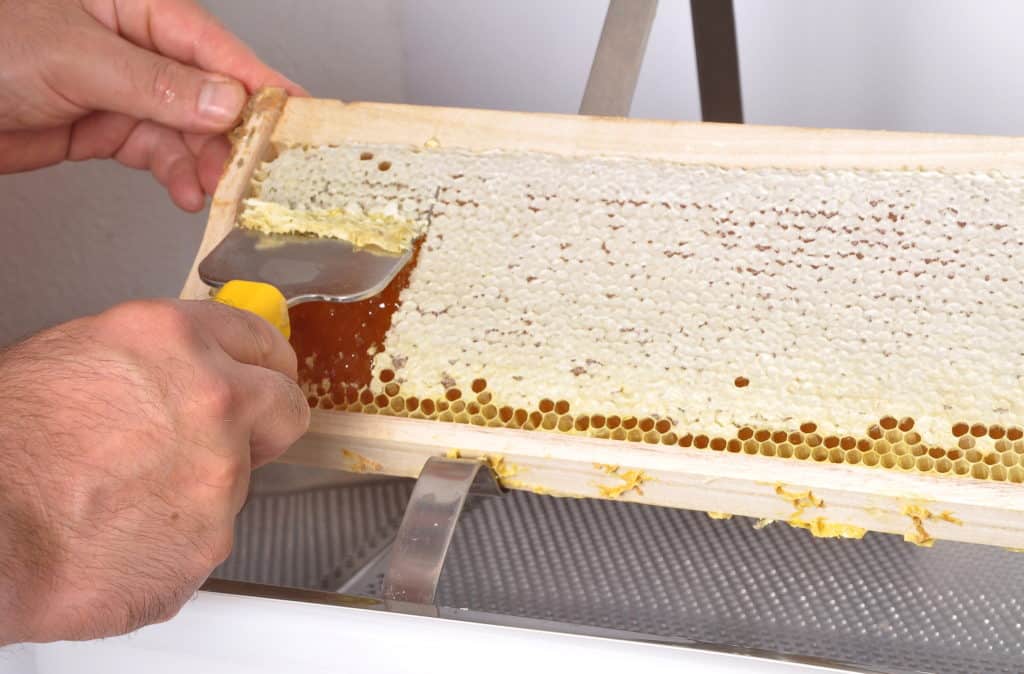
You will need a process of how and where to store your extracted honey supers for the winter. How you store your honey frames, and your brood frames, will also depend on your local climate conditions.
As I stated above the best way to store your honey frames and supers is on the hives but this isn’t practical in most cases.
The next best method is to first freeze the frames to kill off any potential larvae and wax moth for at least 48 hours. Then store these frames in a location to keep them aired out and dry. They do need to be aired out well and have no further honey in them.
This is also recommended for any brood combs that may contain any bee bread or remaining resources. It is recommended to freeze these frames for at least 48 hours first to kill off any potential wax moth and eggs. Then store in a location to keep them dry.
The issue you will always have is mice trying to nest inside your hives and you will need to make arrangements to deal with them.
As I mentioned above, how you store your extra honey and brood frames will vary depending on your location. In more southern areas you will have a slightly different system of storage than up in more northern regions with colder winters.
Here is a great video from Kamon Reynolds from Tennessee describing how he keeps his combs safe over the winter.
Here is a great video from Ian Steppler, in Canada, on how he combats wax moth and other pests (mice) in storing his frames over the winter.
Why Are My Bees Not Filling The Super
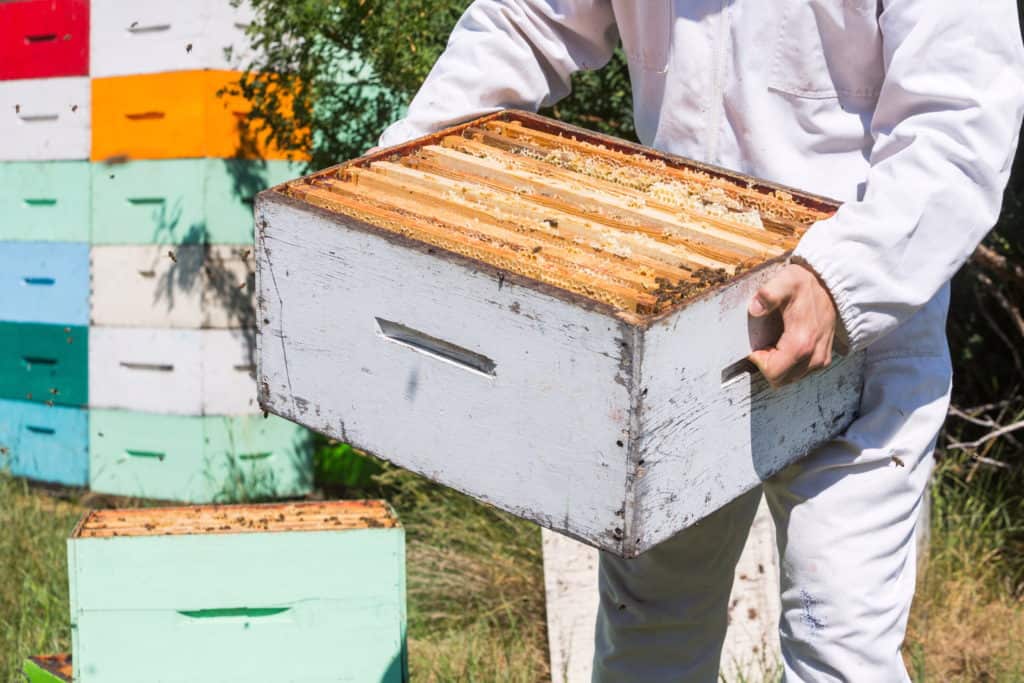
The most common reason your bees aren’t filling your supers is because they are simply not strong enough. Your colony isn’t ready to move up into the super for honey storage, and you have given them to much space.
Your weaker colonies will need more time to get established. These colonies need to build brood comb (with a healthy brood pattern) , collect food and nurse the young, feed drones, defend the hive, and regulate the temperature of the hive. All of which requires a lot of energy, resources, and takes time.
You need to wait for the brood boxes to be full with an established strong colony, then add the honey super to the top. I recommend to always add a frame or 2 of drawn comb, if possible, to the new honey super to help bring the bees up.
And to get a better timeframe on brood production, hold up for a bit, I wrote an article all about how long it takes for bees to fill a brood box I encourage you to read!
Keep in mind, that you could also be near the end of the nectar flow and your new hive may have become strong during a good flow. But now that flow is coming to an end and now there isn’t enough nectar coming in to be stored
If there is no nectar flow, which is known as the time of dearth, they bees are not going to draw out comb and store honey. Simply because there is no nectar for them to gather and store.
How Many Times Do You Harvest Honey In A Year
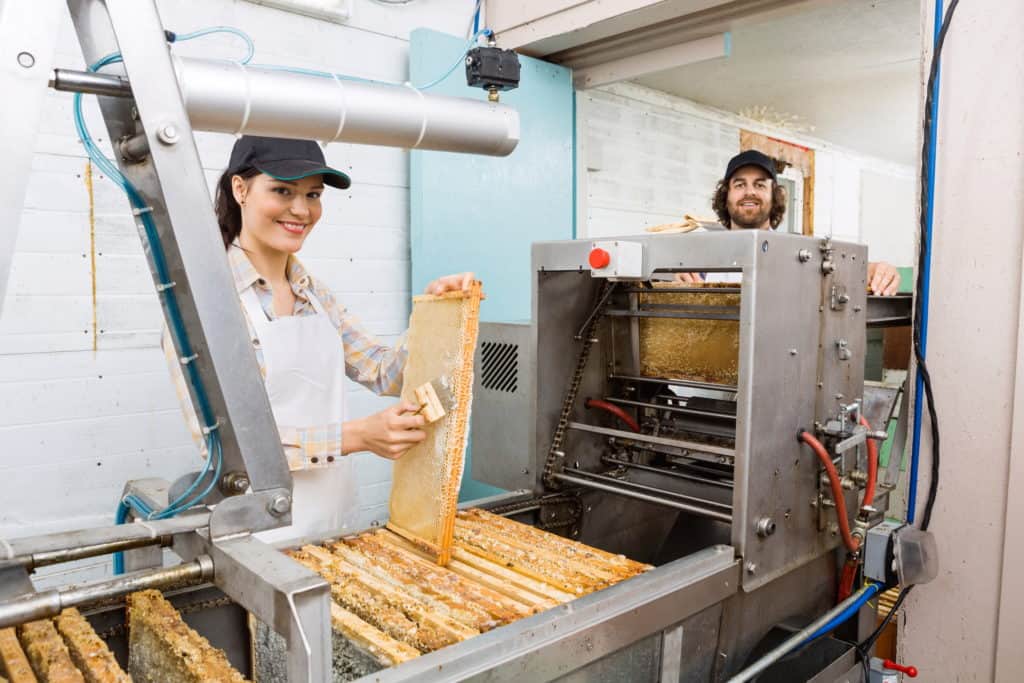
Knowing your best window of time for harvesting is very important and will mean the difference between gathering great tasting honey or honey that could spoil. Like anything in beekeeping, the number of times you can harvest honey in a year varies by your region and weather conditions.
You don’t want to harvest too early because you won’t capitalize on the full amount of honey available. But you don’t want to harvest to late because your risking running into cold weather and taking too much honey without leaving enough for the colony to survive the winter. You also need to carefully time any chemical treatment you administer your bees for mites and such. When you treat your bees cannot overlap during the honey flow.
Most beekeepers can harvest at least 2-3 times a season between the months of mid June and mid September. In some rare cases, due to local climate, beekeepers can only harvest once per season usually late summer or early fall. If its your first year of beekeeping with a new colony you won’t likely be able to harvest much honey if any at all. A new honeybee colony needs a full season to build up a large enough population to gather surplus honey.
Beekeepers who harvest honey 3 times a year will usually label it as varietal honey. The label will also include when it was harvested and from what plant life or vegetation.
When the nectar flow is on beekeepers will add supers to the hives in rapid succession allowing the bees to store as much as the flow will allow. When a super is added on to the hive don’t forget to include a queen excluder, you don’t want the queen laying in the frames meant for honey.
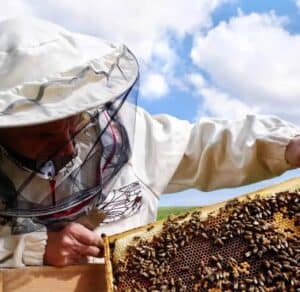
Joseph Davis
My goal is to show that anyone can take up beekeeping and it can be a very rewarding hobby. I strive to share my experiences and answer any questions you may have.
